Category: Back to the Planet
Project title: Energy efficiency through CI-LED technology for hyperspectral Imaging
Project type: Product Design and Innovation
Relevant SDG(s):
- Goal 2: Zero Hunger
- Goal 12: Responsible Consumption and Production
- Goal 13: Climate Action
Primary topic(s):
- Industrial Innovation and Automation
- Net Zero Strategies and Scope 3 Emissions
- Circular Economy
- Climate Resilience and Adaptation
Relevant products(s): almonds, pistachios, and all dried fruit.
Project start date: Development and test trials February 2021; line integration June 2024. End date: May 2025. Duration: 1 year line integration at customer.
Location: Germany
Is this a multi-collaborative project? No
ABSTRACT:
Introduction: Pioneering Energy-Efficient Solutions
In today’s food industry, sustainability and efficiency must go hand in hand. With increasing global awareness of environmental challenges and rising energy costs, businesses are looking for innovative solutions that reduce resource consumption without compromising performance. Our company has taken a significant step toward sustainability by developing a highly flexible sorting machine for nuts that dramatically reduces energy consumption while maintaining the highest standards of precision and quality.
One of the most energy-intensive components of traditional optical sorting machines is their lighting system. Many existing solutions rely on halogen lamps, which not only consume large amounts of energy but also generate excessive heat, require frequent replacements, and have limited efficiency in hyperspectral imaging applications. In response to these challenges, we have introduced an advanced SWIR-LED lighting system, a groundbreaking technology that reduces the power consumption of the lighting system by 80%.
Innovation:
SWIR-LED Technology for Hyperspectral Analysis Optical sorting is a crucial step in modern nut processing, ensuring product quality by detecting and removing defective or contaminated nuts. This process relies on hyperspectral imaging, which analyzes the chemical composition and structural properties of each nut based on how it reflects different wavelengths of light. Traditionally, halogen-based lighting has been the industry standard for hyperspectral imaging.
However, halogen bulbs are highly inefficient, requiring constant energy input to maintain stable illumination. Additionally, their short lifespan leads to frequent replacements, adding to operational costs and environmental waste. Our SWIR-LED lighting system solves these problems. Unlike halogen lamps, SWIR-LEDs provide a stable, energy-efficient light source with a significantly longer lifespan. The key benefits of our innovation include:
- 80% Reduction in Energy Consumption: SWIR-LEDs require a fraction of the energy used by halogen lamps, significantly lowering the overall power consumption of the sorting system.
- Lower Heat Emission: Unlike halogen lamps, which generate excessive heat and require cooling mechanisms, SWIR-LEDs operate at much lower temperatures, reducing the need for additional energy-intensive cooling systems.
- Extended Lifespan: SWIR-LEDs last significantly longer than halogen bulbs, minimizing maintenance efforts and reducing electronic waste.
- Improved Imaging Precision: Our SWIR-LED system provides a more stable and uniform light output, leading to higher accuracy in nut sorting and better detection of defects and contaminants.
Sustainability Impact: Energy Efficiency & Waste Reduction
Our development is a milestone in sustainable food processing, providing tangible benefits not only in terms of energy savings but also in waste reduction and improved resource efficiency.
- Lower Carbon Footprint: By reducing the power consumption of the sorting machine’s lighting system by 80%, we make a direct contribution to lowering CO₂ emissions. This is especially important in food production, where reducing energy demand translates to more sustainable operations.
- Reduced Electronic Waste: The extended lifespan of SWIR-LEDs means fewer light source replacements, resulting in less electronic waste. Traditional halogen lamps require frequent replacement due to their short operational life, whereas our LED technology lasts significantly longer, reducing material waste and disposal costs.
- Minimized Food Waste: Our high-precision hyperspectral imaging system ensures that only defective or contaminated nuts are removed, reducing unnecessary food waste. Many traditional sorting methods rely on less accurate detection technologies, leading to the rejection of perfectly good nuts. Our solution maximizes usable product yield, making the entire process more sustainable.
Flexibility and Industry Adaptability Beyond energy savings and environmental benefits, our sorting machine offers unparalleled flexibility for nut processors. The system is designed to handle various types of nuts, including almonds, walnuts, hazelnuts, and pistachios, without requiring major modifications. Key features include:
- Adaptable Sorting Algorithms: Our machine can be easily adjusted to meet different quality standards and customer requirements.
- Real-Time Data Monitoring: Operators can track sorting efficiency and adjust settings for optimal performance, ensuring a high level of control over product quality.
- Scalability: The system is designed for small, medium, and large-scale nut processing operations, making it suitable for a broad range of industry applications.
A Commitment to a Sustainable Future
Our development represents more than just a technological advancement—it is a commitment to a greener future in food processing. By combining cutting-edge LED technology with flexible, high precision sorting capabilities, we are helping to shape a more sustainable industry. This innovation is not just about reducing energy consumption; it is about redefining efficiency, improving product quality, and promoting responsible resource management. We believe that sustainability and profitability should not be opposing forces, but rather complementary goals. Our SWIR-LED-based nut sorting machine is proof that technology and environmental responsibility can go hand in hand. By investing in energy-efficient solutions like ours, food processors can significantly reduce their environmental impact, cut costs, and contribute to a more sustainable food supply chain. We are excited about the opportunity to bring this technology to the industry and look forward to collaborating with partners who share our vision for a sustainable future
OBJECTIVES:
Setting up a customer project with the development of the new SWIR LED, a LED for hyperspectral imaging. The Machine is at the customer. Instead of delivering multiple Machines, we developed a Machine capable to sort all kinds of nuts and dried fruits.
IMPACT AND OUTCOMES:
Test Report on CI-LED HSL Hyperspectral imaging: Comparison with Halogen Unit
The tests evaluated the performance of the CI LED HSL compared to a halogen unit in various applications. Key aspects analyzed included brightness, temperature dependence, and suitability for different products (meat, potatoes, almonds, frozen vegetables).
Methodology: The tests were conducted using a standardized test kit that transported product samples through the field of view of a Hyperspectral camera at a constant speed. A halogen unit served as a reference, while the CI-LED HSL was mechanically adjusted to achieve the optimal focus distance of 300 mm. The LED was controlled via a control box, offering 16 different intensity programs.
Results:
General Comparison: Halogen vs. LED
Advantages of LED:
- More compact design: Even with air cooling, the LED unit is smaller than halogen units.
- No heat radiation on the product: Particularly beneficial for meat and frozen products.
- Minimal self-heating: A simple fan is sufficient for cooling.
- Lower energy consumption: 100-170 W (LED) vs. 860 W (halogen).
Brightness Comparison:
- The halogen lamp was 2 to 2.5 times brighter than the LED.
- LED intensity drops sharply beyond 1565 nm, making white balancing in this range impossible.
Temperature Dependence:
- LED brightness increases as temperature decreases. At 20°C lower temperature, intensity was 1000 counts higher.
- A slight spectral shift of approximately 4 nm was observed.
Noise Analysis:
- Conclusion: LED exhibits higher fluctuations when smoothing is enabled.
Product Tests:
Vegetables and fruits:
- Minimal differences between LED and halogen.
- LED made dark foreign objects (e.g., plastic) more visible than halogen.
Potatoes:
- LED performed better in detecting dark foreign objects than halogen.
Almonds:
- No major differences between LED and halogen. The quality level can be hold, several adjustments in commissioning must be made.
Background Segmentation:
- LED images required a higher segmentation threshold to remove the background.
- Dark objects remained more visible on LED images than on halogen images.
Summary: Advantages of the new CI LED HSL
Advantages:
- No heat impact on products (crucial for meat & frozen products).
- Minimal self-heating – simple cooling is sufficient.
- More compact design compared to halogen lamps.
- 80% lower energy consumption.
- Fewer electrical components are required (no transformer, rectifier needed).
- Longer lifespan, reduce waste of electronics.
Conclusion:
CI-LED HSL provides significant advantages over halogen units, particularly due to lower heat generation and reduced energy consumption. It is well suited for various applications but has limitations in maximum brightness and spectral range.
The implementation of the machine at the customer’s site demonstrates that applications using low-energy machines have a promising future in the market.
The combination of hyperspectral technology, which ensures the highest level of foreign object detection, with LED technology will bring significant benefits for the environment and climate.
To drive these developments, Insort was willing to invest a high sum in research and development and cover the higher material costs for the first customer machines at its own expense. Through process optimization of this new technology, it will also be possible in the future to serve the market at a competitive price.
In what ways is the project innovative?
- Use a universal Machine for sorting several different kinds of nuts and dried fruits.
- The implementation of two SWIR LEDS leads to a very high CO2 reduction due to lower energy usage.
- A SWIR LED for hyperspectral Cameras didn’t t exist and is the implementation of a worldwide new technology at the customer site.
More information: https://www.insort.at/sherlock-hypernova/



